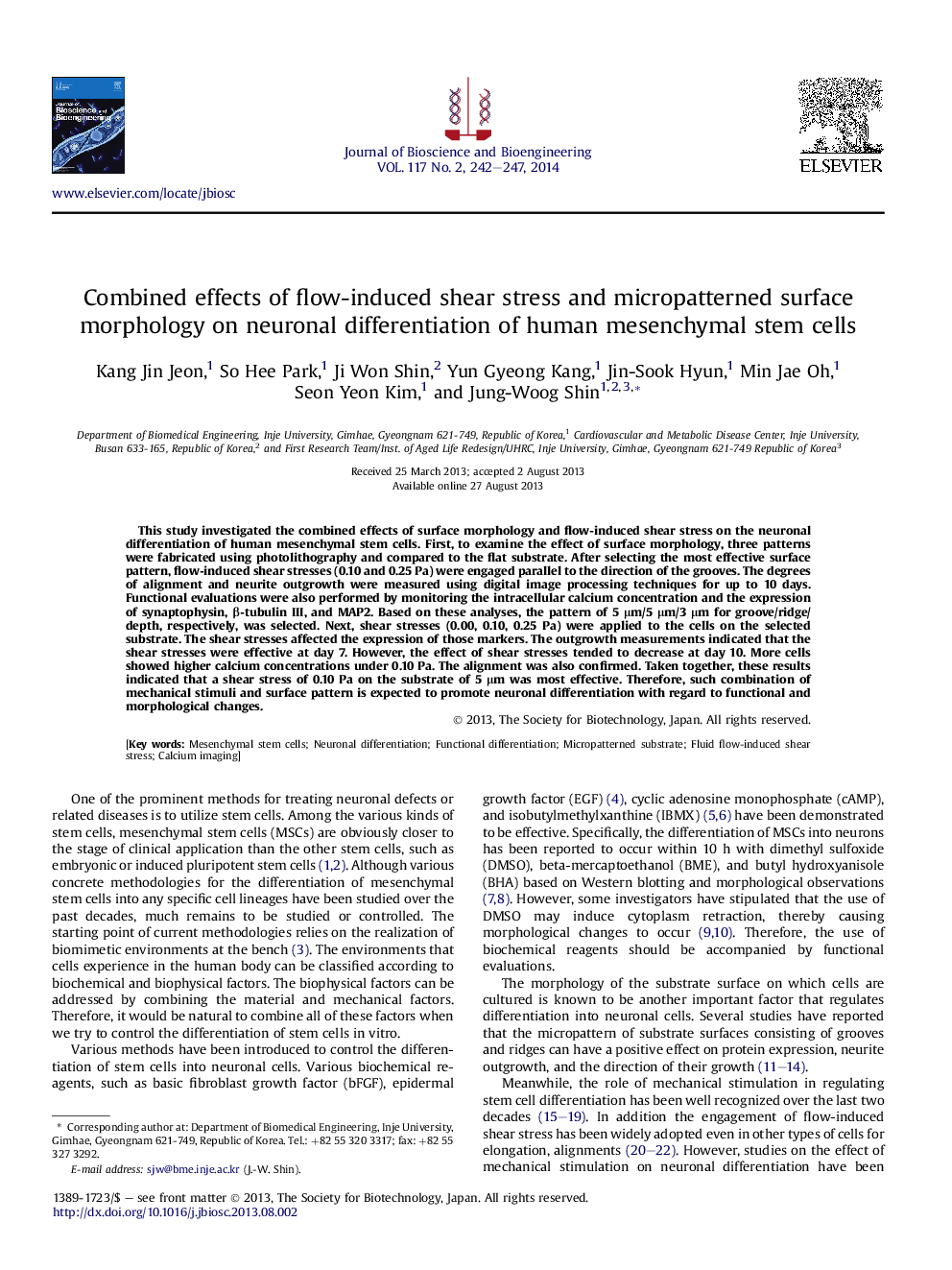| Article ID | Journal | Published Year | Pages | File Type |
|---|---|---|---|---|
| 20820 | Journal of Bioscience and Bioengineering | 2014 | 6 Pages |
This study investigated the combined effects of surface morphology and flow-induced shear stress on the neuronal differentiation of human mesenchymal stem cells. First, to examine the effect of surface morphology, three patterns were fabricated using photolithography and compared to the flat substrate. After selecting the most effective surface pattern, flow-induced shear stresses (0.10 and 0.25 Pa) were engaged parallel to the direction of the grooves. The degrees of alignment and neurite outgrowth were measured using digital image processing techniques for up to 10 days. Functional evaluations were also performed by monitoring the intracellular calcium concentration and the expression of synaptophysin, β-tubulin III, and MAP2. Based on these analyses, the pattern of 5 μm/5 μm/3 μm for groove/ridge/depth, respectively, was selected. Next, shear stresses (0.00, 0.10, 0.25 Pa) were applied to the cells on the selected substrate. The shear stresses affected the expression of those markers. The outgrowth measurements indicated that the shear stresses were effective at day 7. However, the effect of shear stresses tended to decrease at day 10. More cells showed higher calcium concentrations under 0.10 Pa. The alignment was also confirmed. Taken together, these results indicated that a shear stress of 0.10 Pa on the substrate of 5 μm was most effective. Therefore, such combination of mechanical stimuli and surface pattern is expected to promote neuronal differentiation with regard to functional and morphological changes.
